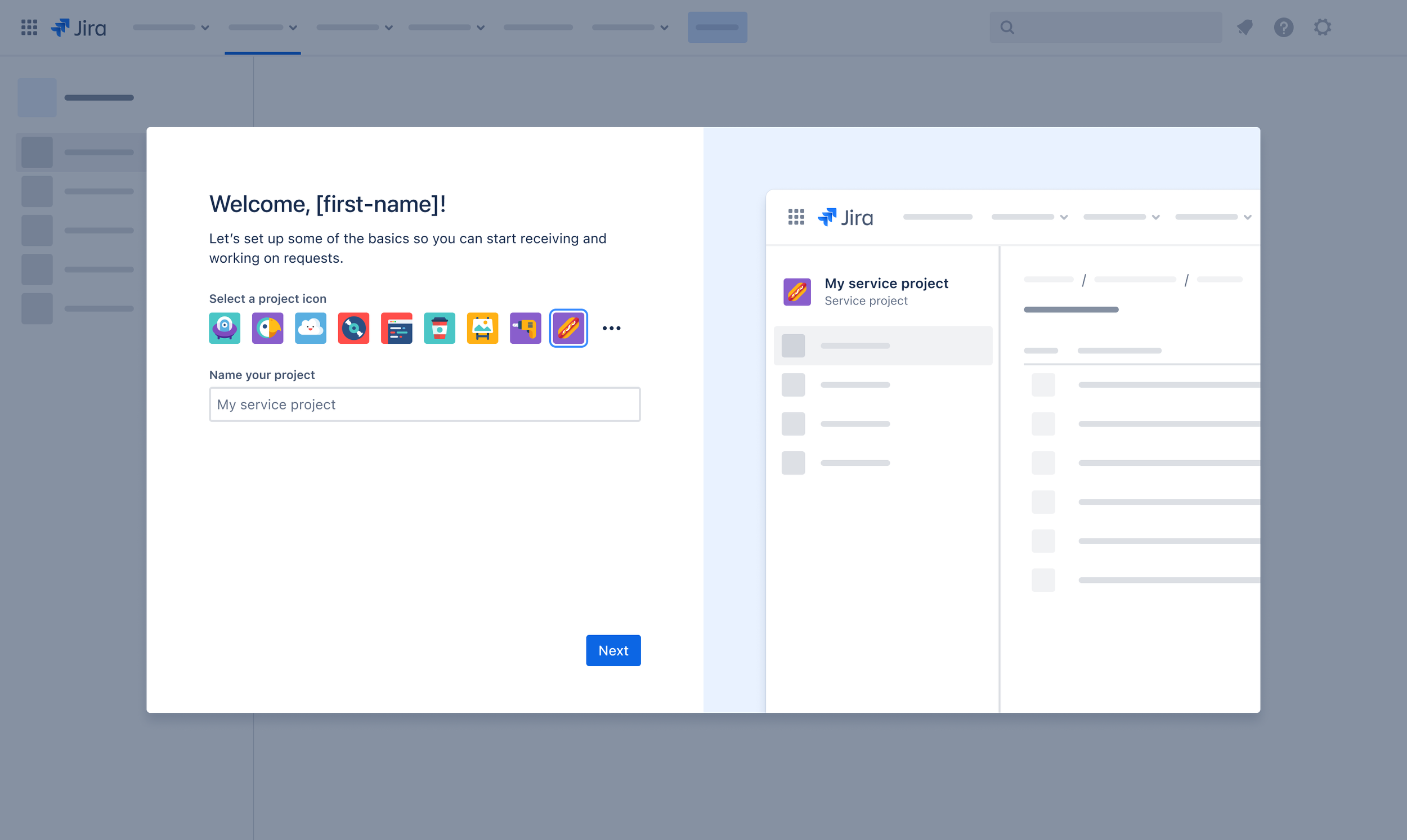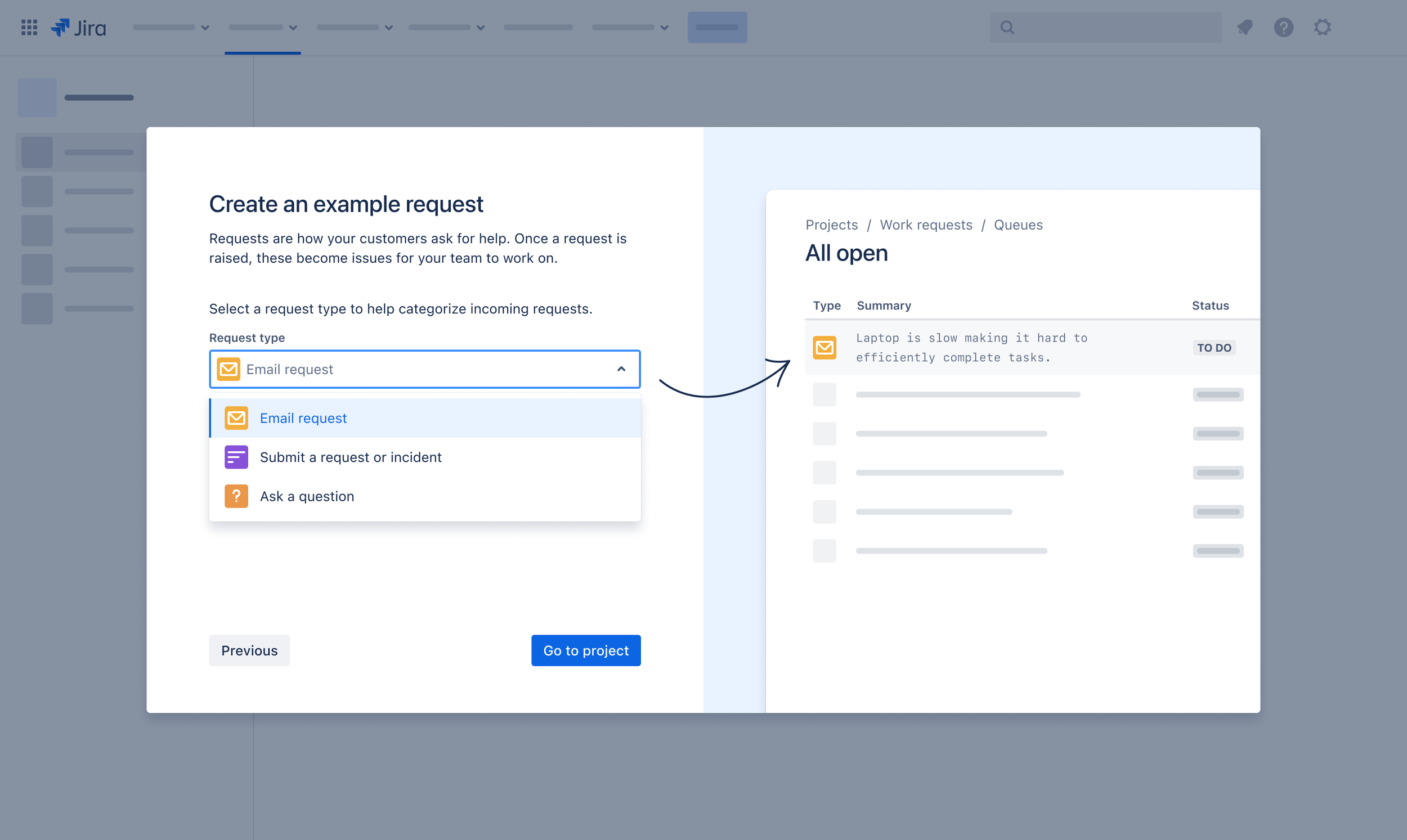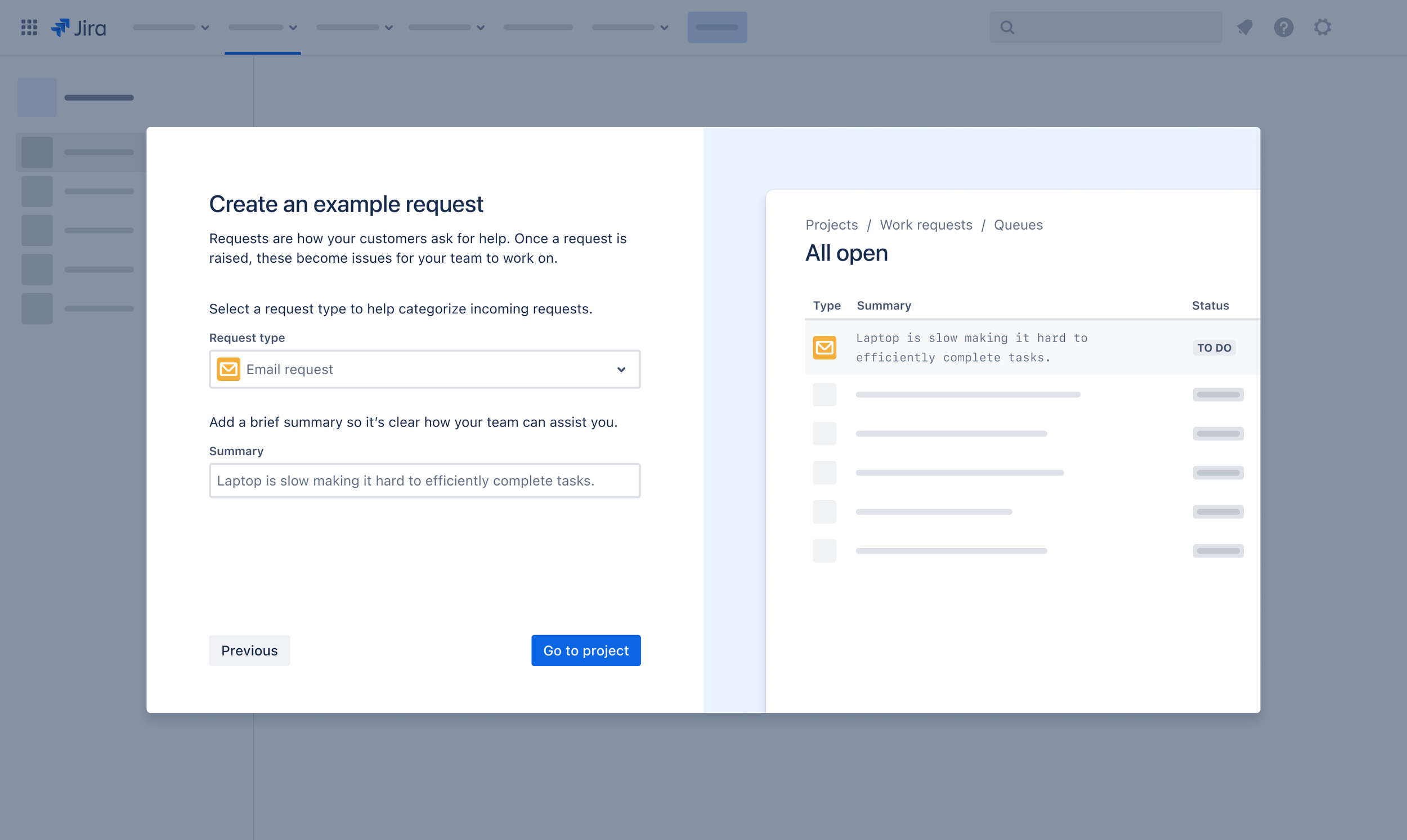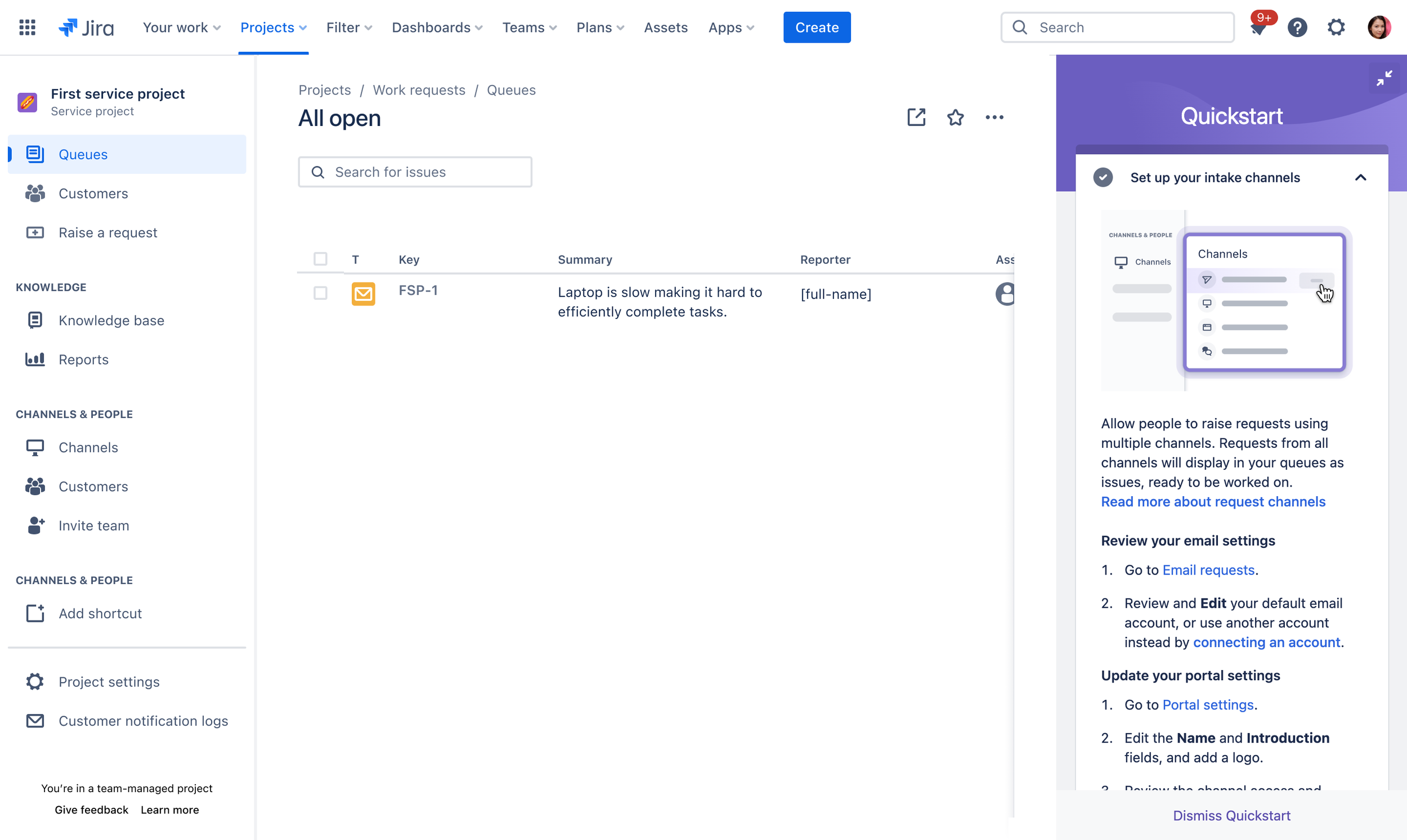Progressively disclosing how to get started with Jira Service Management
Objective
The goal for this experiment was to observe if introducing a key concept (request types) during the onboarding of JSM will drive successful first sessions that lead to repeated usage.
—
ℹ️ What is Jira Service Management you might be asking? It’s a tool that helps companies manage and respond to customer and internal requests more efficiently.
Company: Atlassian
Role: Growth designer
Work: User Research, Visual/User Interface, Interaction and Experiment Design
Team: Cross-functional Stakeholders, Content Designer, Product Manager, Engineering
Outcome
~14.8% uplift D1to6AI
A consistent onboarding approach aligned with other Jira ‘getting started’ experiences.
Introduced a progressive disclosure framework for future teams to build on.
Problem
Getting started with JSM has been time-consuming and cumbersome. Our previous experience involved numerous granular steps just to get into the product (see Fig. 1). Moreover, once users were in, they were met with an overwhelming level of complexity, making it even more difficult and confusing to understand how to begin.
Fig. 1 Previous flow/screens to land in-product
Our data told us:
🛑 52% of customers drop after their first session
🛑 70% churn within 2 months.
Insights
People want to learn by doing at their own pace
💡 Depending on the task, its complexity and the user’s skill; some users may prefer to take responsibility for their own learning.
Sample space users are far more engaged
💡 Certain templates include a sample space filled with pre-configured requests. Those who interact with the sample space perform 65% more happy path actions in comparison to non-sample space users.
💡 Overall, sample space users are more likely to be engaged in weeks 3 - 4.
Previous experience
The journey to Jira Service Management involves frequent context switching, as users are introduced to multiple concepts that require a certain level of understanding to grasp how the system works.
One fundamental concept is the request issue.
However, this key function is buried within the onboarding experience, overshadowed by other concepts that aren’t essential for getting started.
Fig. 2
Hypothesis
If… we enable users to create their first request while JSM is installing, they… will be more motivated to continue exploring JSM because… they will have an immediate opportunity to build their knowledge with a request they can interact with.
Proposed experience
The idea behind this experience was to establish a learn-by-doing (see Fig. 3; step 3) path centered around the fundamental concept of a request issue.
We believed that focusing on this core concept early in onboarding and progressively revealing its details would help users grasp it, leading to more intuitive next steps within the product.
Fig. 3

Experiment design
Our experiment was presented in a modal overlaying the user’s destination. The experience was designed to be instructive yet easy to digest, with visuals on the right-hand side to create the perception that something is being actively created.
Easy to start
A functional requirement was to name the project being created. We provided a default icon and name to reduce the cognitive load on the user at this step.
Introducing the core concept: Requests
Along with descriptive text, we limited the actions to browsing and selecting from our pre-configured list of requests.
A request to play with
Based on our research and insights, users who interacted with sample or demo requests completed 65% more happy paths. By landing users directly with a request, we demonstrated the core use of Jira Service Management. This approach allowed users to immediately engage with the request issue, speeding up their time-to-value and facilitating an ‘AHA’ moment.
What I learnt
Strike a balance between showing and telling. During user testing, participants were better able to understand how something worked when a visual was paired with a narrative. This approach is crucial for creating instructive experiences.



